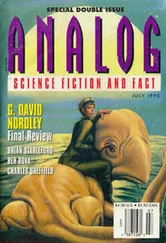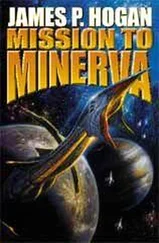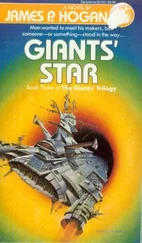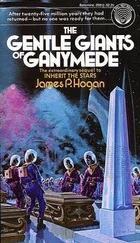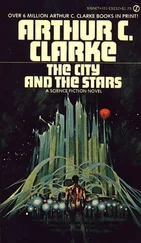James Hogan - Inherit the Stars
Здесь есть возможность читать онлайн «James Hogan - Inherit the Stars» весь текст электронной книги совершенно бесплатно (целиком полную версию без сокращений). В некоторых случаях можно слушать аудио, скачать через торрент в формате fb2 и присутствует краткое содержание. Жанр: Фантастика и фэнтези, на английском языке. Описание произведения, (предисловие) а так же отзывы посетителей доступны на портале библиотеки ЛибКат.
- Название:Inherit the Stars
- Автор:
- Жанр:
- Год:неизвестен
- ISBN:нет данных
- Рейтинг книги:3 / 5. Голосов: 1
-
Избранное:Добавить в избранное
- Отзывы:
-
Ваша оценка:
- 60
- 1
- 2
- 3
- 4
- 5
Inherit the Stars: краткое содержание, описание и аннотация
Предлагаем к чтению аннотацию, описание, краткое содержание или предисловие (зависит от того, что написал сам автор книги «Inherit the Stars»). Если вы не нашли необходимую информацию о книге — напишите в комментариях, мы постараемся отыскать её.
Inherit the Stars — читать онлайн бесплатно полную книгу (весь текст) целиком
Ниже представлен текст книги, разбитый по страницам. Система сохранения места последней прочитанной страницы, позволяет с удобством читать онлайн бесплатно книгу «Inherit the Stars», без необходимости каждый раз заново искать на чём Вы остановились. Поставьте закладку, и сможете в любой момент перейти на страницу, на которой закончили чтение.
Интервал:
Закладка:
"How about a partial picture?" Hunt persisted. Was there any way that a contour map could be calculated, showing just the distribution of radiation sources immediately prior to the bombardment?
"We tried that, too. You do get a degree of statistical clustering, yes. But there’s no way we could tell where each individual sample was when it got irradiated. They would have been thrown miles by the impacts; a lot of them would have been bounced all over the place by repeat impacts. Nobody ever built a computer that could unscramble all that entropy. You’re up against the second law of thermodynamics; if you ever built one, it wouldn’t be a computer at all-it would be a refrigerator."
"What about a chemical approach? What techniques are available that might reveal where the prebombardment craters were? Could their ‘ghosts’ still be detected a thousand feet down below the surface?"
"No way!"
"There has to be some way of reconstructing what the surface used to look like."
"Did you ever try reconstructing a cow from a truckload of hamburger?"
They talked about it for another two days and into the nights at Steinfield’s home and Hunt’s hotel. Hunt told Steinfield why he needed the information. Steinfield told Hunt he was crazy. Then one morning, back at the laboratory, Hunt exclaimed, "The Nearside exceptions!"
"Huh?"
"The Nearside craters that date from the time of the storm. Some of them could be right from the beginning of it."
"So?"
"They didn’t get buried like the first craters on Farside. They’re intact."
"Sure-but they won’t tell you anything new. They’re from recent impacts, same as everything that’s on the surface of Farside."
"But you said some of them showed radiation anomalies. That’s just what I want to know more about."
"But nobody ever found any suggestion of what you’re talking about."
"Maybe they weren’t looking for the right things. They never had any reason to."
The physics department had a comprehensive collection of Lunar rock samples, a sizeable proportion of which comprised specimens from the interiors and vicinities of the young, anomalous craters on Nearside. Under Hunt’s persistent coercion, Steinfleld agreed to conduct a specially devised series of tests on them. He estimated that he would need a month to complete the work.
Hunt returned to Houston to catch up on developments there and a month later flew back to Omaha. Steinfield’s experiments had resulted in a series of computer-generated maps showing anomalous Nearside craters. The craters divided themselves into two classes on the maps: those with characteristic irradiation patterns and those without.
"And another thing," Steinfield informed him. "The first class, those that show the pattern, have also got another thing in common that the second class hasn’t got: glasses from the centers were formed by a different process. So now we’ve got anomalous anomalies on Nearside, too!"
Hunt spent a week in Omaha and then went directly to Washington to talk to a group of government scientists and to study the archives of a department that had ceased to exist more than fifteen years before. He then returned to Omaha once again and showed his findings to Steinfleld. Steinfield persuaded the university authorities to allow selected samples from their collection to be loaned to the UNSA Mineralogy and Petrology Laboratories in Pasadena, California, for further testing of an extremely specialized nature, suitable equipment for which existed at only a few establishments in the world.
As a direct consequence of these tests, Caldwell authorized the issue of a top-priority directive to the UNSA bases at Tycho, Crisium, and some other Lunar locations, to conduct specific surveys in the areas of certain selected craters. A month after that, the first samples began arriving at Houston and were forwarded immediately to Pasadena; so were the large numbers of samples collected from deep below the surface of Farside.
The outcome of all this activity was summarized in a memorandum stamped "SECRET" and written on the anniversary of Hunt’s first arrival in Houston.
9 September 2028
TO: G. Caldwell
Executive Director
Navigation and Communications
Division
FROM: Dr. V. Hunt
Section Head
Special Assignment Group L
ANOMALIES OF LUNAR CRATERING
(1) Hemispheric Anomalies
For many years, radical differences have been known to exist between the nature and origins of Lunar Nearside and Farside surface features.
(a) Nearside
Original Lunar surface from 4 billion years ago. Nearly all surface cratering caused by explosive release of kinetic energy by meteorite impacts. Some younger-e.g., Copernicus, 850 million years old.
(b) Farside
Surface comprises large mass of recently added material to average depth circa 300 meters. Craters formed during final phase of this bombardment. Dating of these events coincides with Lunarian presence. Origin of bombardment uncertain.
(2) Nearside Exceptions
Known for approx. the last thirty years that some Nearside craters date from same period as those on Farside. Current theory ascribes them to overshoots from Farside bombardment.
(3) Conclusion From Recent Research at Omaha and Pasadena
All Nearside exceptions previously attributed to meteoritic impacts. This belief now considered incorrect. Two classes of exceptions now distinguished:
(a) Class I Exceptions
Confirmed as meteoritic impacts occurring 50,000 years ago.
(b) Class II Exceptions Differing from Class I in irradiation history, formation of glasses, absence of impact corroboration and positive results to tests for elements hyperium, bonnevilliuin, genevium. Example: Crater Lunar Catalogue reference MB 3076/K2/E currently classed as meteoritic. Classification erroneous. Crater MB 3076/K2/E was made by a nucleonic bomb. Other cases confirmed. Investigations continuing.
(4) Farside Subsurface
Intensive sampling from depths approximating that of the original crust indicate widespread nucleonic detonations prior to meteorite bombardment. Thermonuclear and fission reactions also suspected but impossible to confirm.
(5) Implications
(a) Sophisticated weapons used on Luna at or near time of Lunarian presence, mainly on Farside. Lunarian involvement implied but not proved.
(b) If Lunarians involved, possibility of more widespread conflict embracing Lunarian home planet. Possible cause of Lunarian extinction.
(c) Charlie was a member of more than a small, isolated expedition to our Moon. A significant Lunarian presence on the Moon is indicated. Mainly concentrated on Farside. Practically all traces since obliterated by meteorite storm.
Chapter Twelve
Front page feature of the New York Times,
14 October 2028:
LUNARIAN PLANET LOCATED
Did Nuclear War Destroy Minerva?
Sensational new announcements by UN Space Arm Headquarters, Washington, D.C., at last positively identify the home planet of the Lunarian civilization, known to have achieved space flight and reached Earth’s Moon fifty thousand years ago. Information pieced together during more than a year of intense work by teams of scientists based at the UNSA Navigation and Communications Division Headquarters, Houston, Texas, shows conclusively that the Lunarians came from an Earth-like planet that once existed in our own Solar System.
A tenth planet, christened Minerva after the Roman goddess of wisdom, is now known to have existed approximately 250 million miles from the Sun between the orbits of Mars and Jupiter, in the position now occupied by the Asteroid Belt, and is firmly established as having been the center of the Lunarian civilization.
Читать дальшеИнтервал:
Закладка:
Похожие книги на «Inherit the Stars»
Представляем Вашему вниманию похожие книги на «Inherit the Stars» списком для выбора. Мы отобрали схожую по названию и смыслу литературу в надежде предоставить читателям больше вариантов отыскать новые, интересные, ещё непрочитанные произведения.
Обсуждение, отзывы о книге «Inherit the Stars» и просто собственные мнения читателей. Оставьте ваши комментарии, напишите, что Вы думаете о произведении, его смысле или главных героях. Укажите что конкретно понравилось, а что нет, и почему Вы так считаете.


![Лаура Бренз - Потомственная ведьма[Inherit the Witch]](/books/79609/laura-brenz-potomstvennaya-vedma-inherit-the-witch-thumb.webp)
